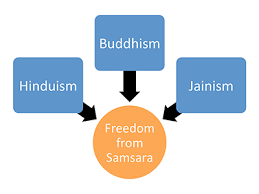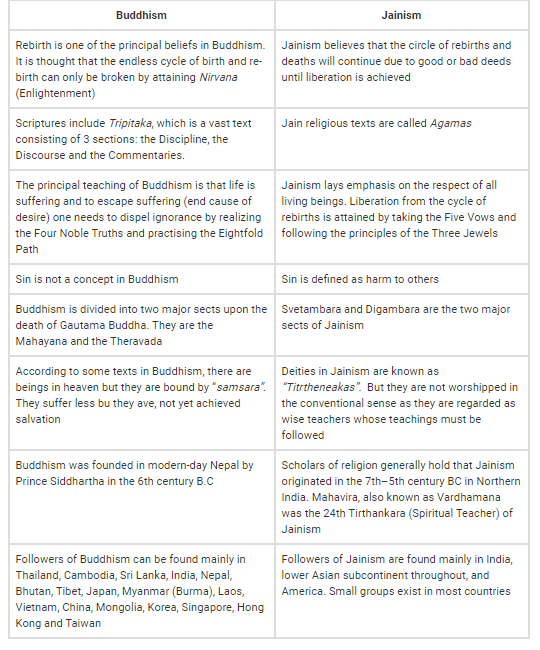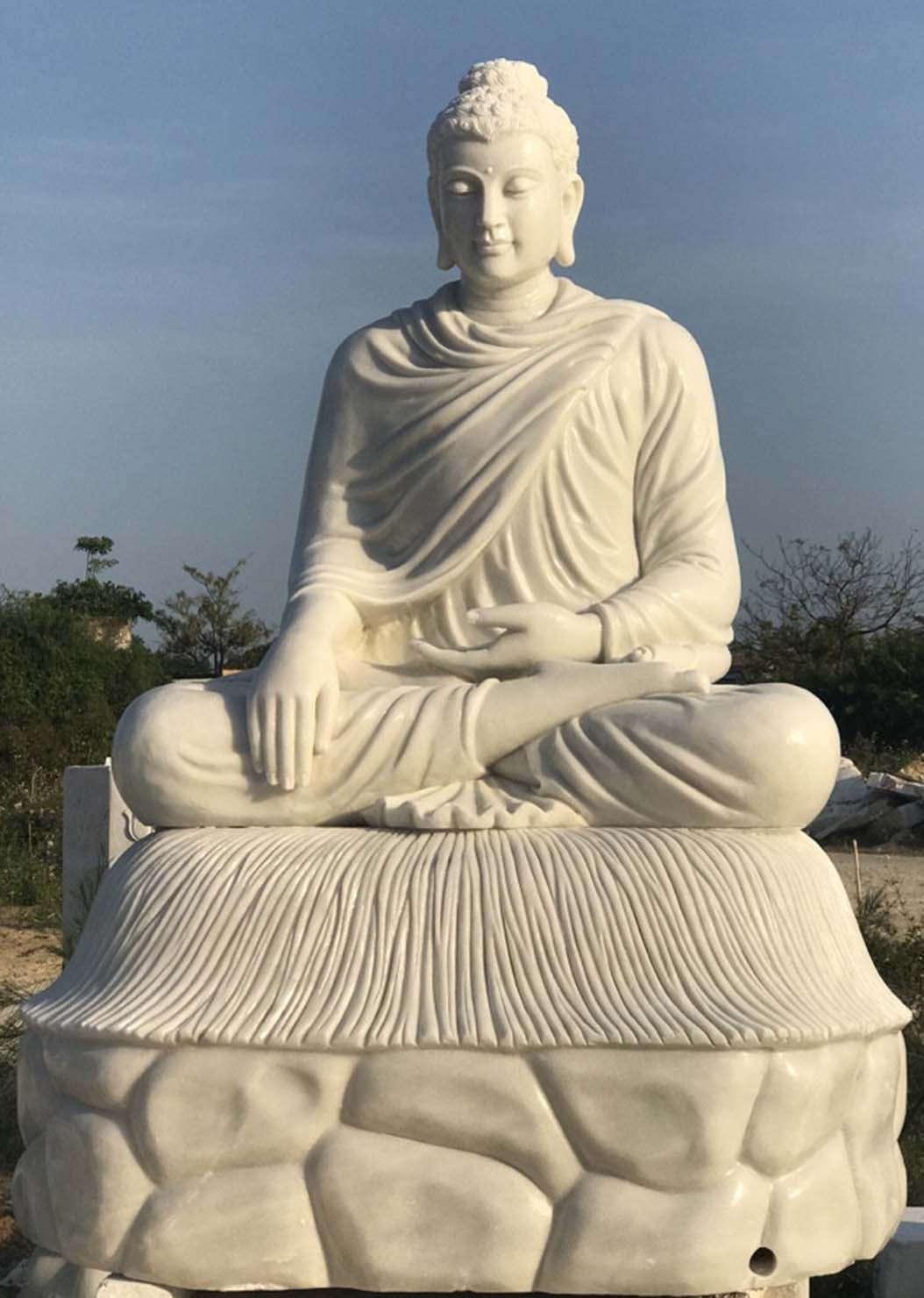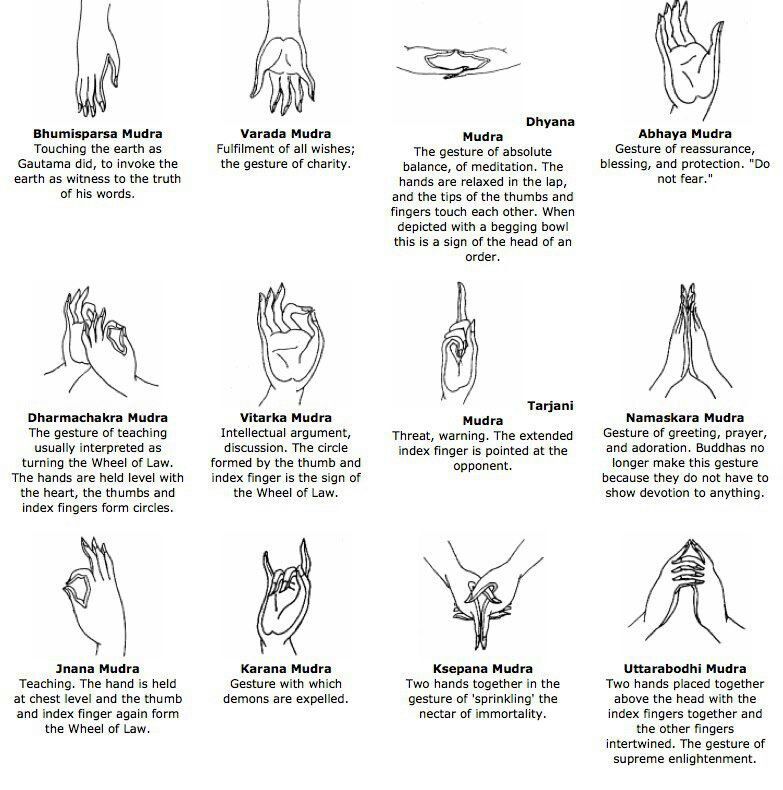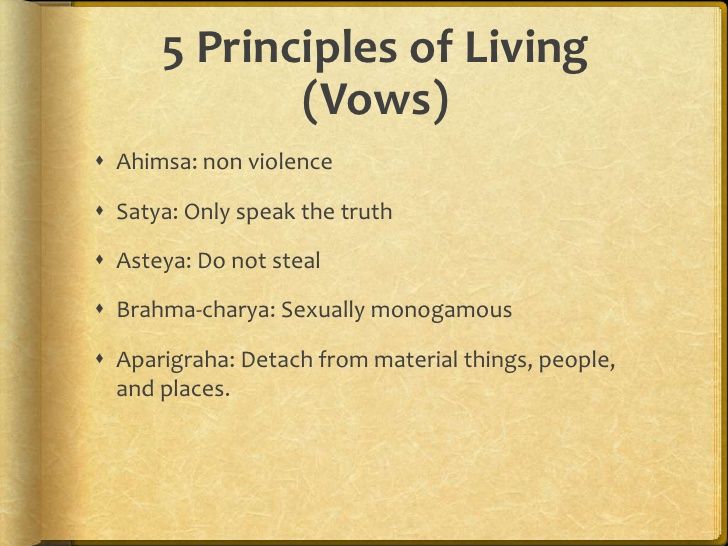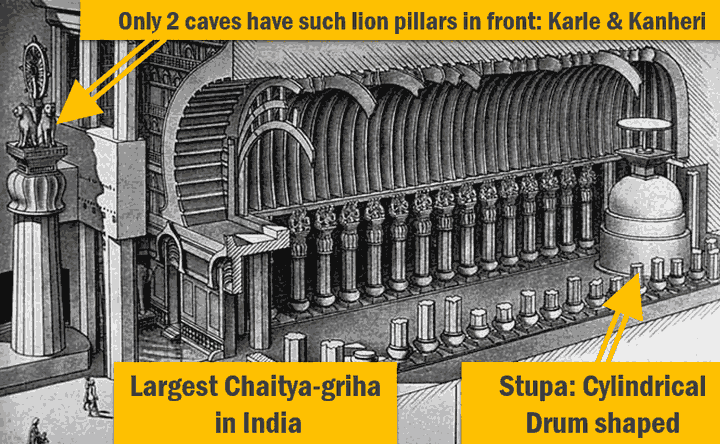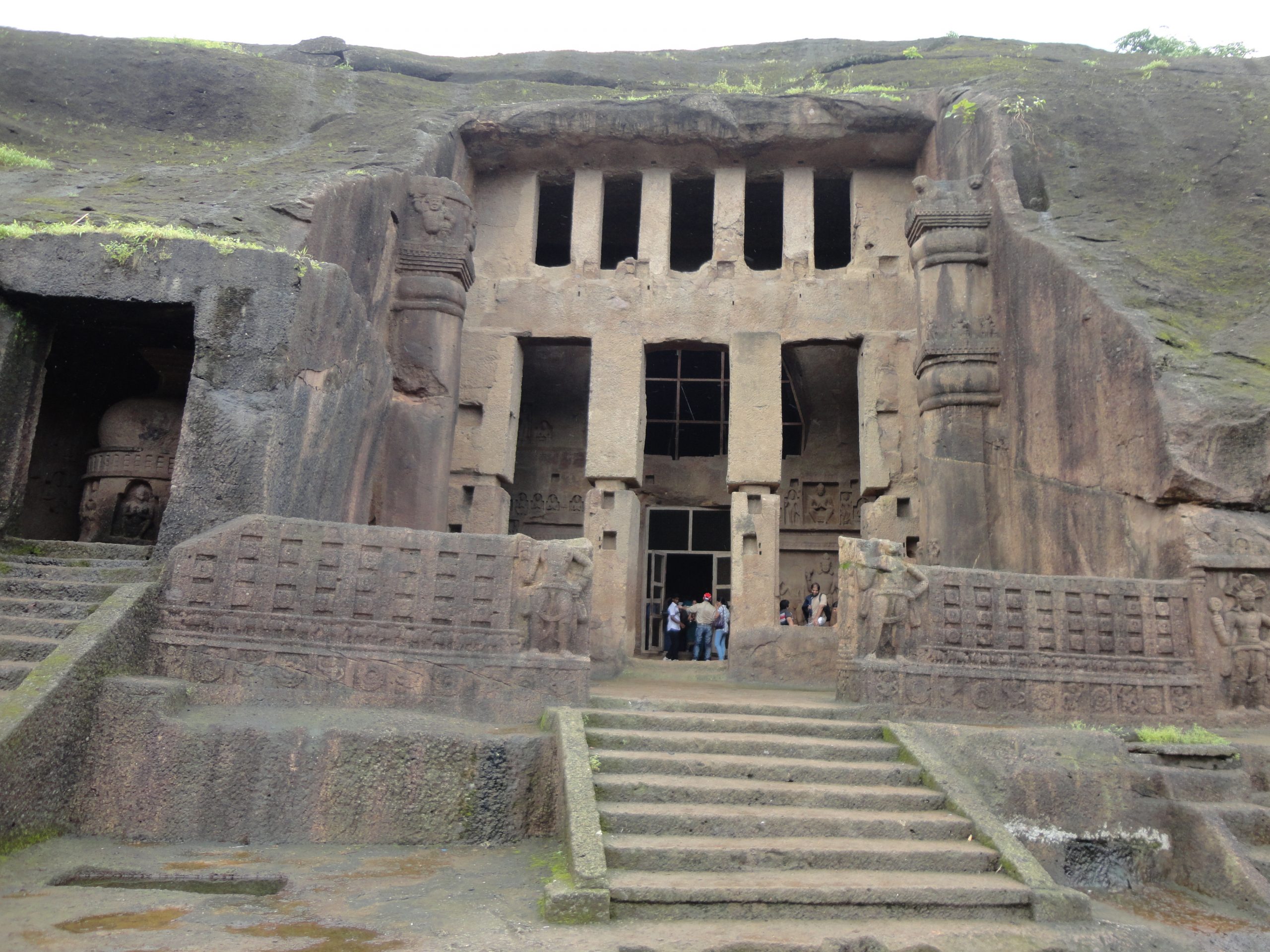The Dec 19th Static Quiz on Ancient History (Buddhism and Jainism) Part 2
Quiz-summary
0 of 5 questions completed
Questions:
- 1
- 2
- 3
- 4
- 5
Information
The Dec 19th Static Quiz on Ancient History (Buddhism and Jainism) Part 2
You have already completed the quiz before. Hence you can not start it again.
Quiz is loading...
You must sign in or sign up to start the quiz.
You have to finish following quiz, to start this quiz:
Results
0 of 5 questions answered correctly
Your time:
Time has elapsed
You have reached 0 of 0 points, (0)
Categories
- Not categorized 0%
- 1
- 2
- 3
- 4
- 5
- Answered
- Review
- Question 1 of 5
1. Question
Which of the following systems of Indian Philosophy uphold the ideology of Charvakism, Ajivika, Jainism and Buddhism?
CorrectAns;- b) The Unorthodox System of Indian Philosophy
Explanation;-
• The Unorthodox systems of Indian Philosophy uphold the ideology of Charvakism, Ajivika, Jainism and Buddhism.
• To accept the authority of Vedas and are regarded as orthodox (astika) schools of Hindu philosophy besides these, schools that do not accept the authority of the Vedas are heterodox (nastika) systems such as Buddhism, Jainism, Ajivika and Charvaka.
• In relation to religious life, orthodoxy means correct or sound belief according to an authoritative norm; heterodoxy refers to belief in a doctrine differing from the norm.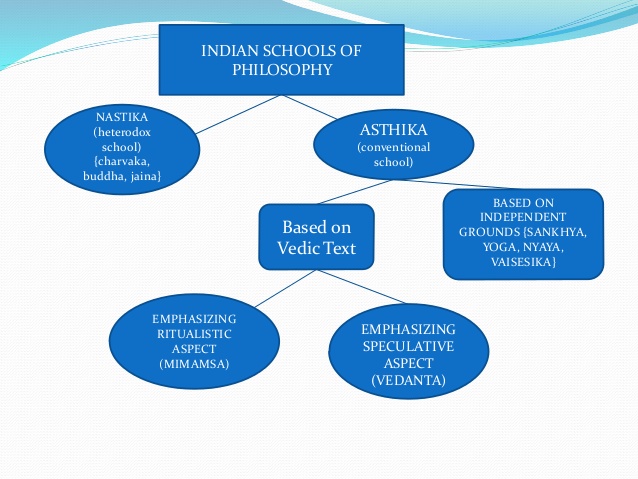 Incorrect
IncorrectAns;- b) The Unorthodox System of Indian Philosophy
Explanation;-
• The Unorthodox systems of Indian Philosophy uphold the ideology of Charvakism, Ajivika, Jainism and Buddhism.
• To accept the authority of Vedas and are regarded as orthodox (astika) schools of Hindu philosophy besides these, schools that do not accept the authority of the Vedas are heterodox (nastika) systems such as Buddhism, Jainism, Ajivika and Charvaka.
• In relation to religious life, orthodoxy means correct or sound belief according to an authoritative norm; heterodoxy refers to belief in a doctrine differing from the norm.
- Question 2 of 5
2. Question
With reference to the history of ancient India, which of the following was/were common to both Buddhism and Jainism?(UPSC Pre 2012)
1. Avoidance of extremities of penance and enjoyment
2. Indifference to the authority of the Vedas
3. Denial of efficacy of ritualsSelect the incorrect answer using the codes given below :
CorrectAns; – a) 1 only
Explanation;-
• As question asked to choose the incorrect statement i.e. statement 1 only, 2 and 3 are common between Buddhism and Jainism but statement one is not common between both the religions.
• The Buddhism and Jainism, though they did not attack the caste system directly, were nevertheless opposed to it and can, to that extent, be described as non-caste movements.
• They provided an opportunity to the lower caste to opt out of their caste by joining a non-caste sect.
• The lack of expenses involved in rituals of worship which these sects were indifferent to, as contrasted with Brahmanical worship, also attracted the same stratum in the society.
• So both statements 2 and 3 are correct. Incorrect
IncorrectAns; – a) 1 only
Explanation;-
• As question asked to choose the incorrect statement i.e. statement 1 only, 2 and 3 are common between Buddhism and Jainism but statement one is not common between both the religions.
• The Buddhism and Jainism, though they did not attack the caste system directly, were nevertheless opposed to it and can, to that extent, be described as non-caste movements.
• They provided an opportunity to the lower caste to opt out of their caste by joining a non-caste sect.
• The lack of expenses involved in rituals of worship which these sects were indifferent to, as contrasted with Brahmanical worship, also attracted the same stratum in the society.
• So both statements 2 and 3 are correct.
- Question 3 of 5
3. Question
The Lord Buddha’s image is sometimes shown with the hand gesture called ‘Bhumisparsha Mudra’. It symbolizes( UPSC 2012)
CorrectAns;- b) Buddha’s calling of the Earth to witness his purity and chastity despite the temptations of Mara
Explanation;-
• The Bhumisparsha Mudra symbolizes the moment of Buddha’s enlightenment.
• In this pose, his legs are crossed, left hand faces upwards raised above the lap, and the right hand points to the ground touching (sparsha) the earth (bhumi), as witness to the moment of enlightenment.
• The Mudra, Sanskrit Mudrā, (“seal,” “mark,” or “gesture”), in Buddhism and Hinduism, a symbolic gesture of the hands and fingers used either in ceremonies and dance or in sculpture and painting.
• The Mudras in sculpture and other visual arts, being necessarily immobile, are relatively restricted in number. Incorrect
IncorrectAns;- b) Buddha’s calling of the Earth to witness his purity and chastity despite the temptations of Mara
Explanation;-
• The Bhumisparsha Mudra symbolizes the moment of Buddha’s enlightenment.
• In this pose, his legs are crossed, left hand faces upwards raised above the lap, and the right hand points to the ground touching (sparsha) the earth (bhumi), as witness to the moment of enlightenment.
• The Mudra, Sanskrit Mudrā, (“seal,” “mark,” or “gesture”), in Buddhism and Hinduism, a symbolic gesture of the hands and fingers used either in ceremonies and dance or in sculpture and painting.
• The Mudras in sculpture and other visual arts, being necessarily immobile, are relatively restricted in number.
- Question 4 of 5
4. Question
Which of the following statements is/are applicable to Jain doctrine?( UPSC Pre 2013)
1. The surest way of annihilating Karma is to practice penance.
2. Every object, even the smallest particle has not soul.
3. Karma is the bane of the soul and must be ended.Select the correct answer using the codes given below.
CorrectAns;- c) 1 and 3 only
Explanation;-
• The 2nd statement is incorrect , every object even the smallest particle according to Jainism has soul.• The Jainism is a religion of self-help.
• There are no gods or spiritual beings that will help human beings.
• The three guiding principles of Jainism, the ‘three jewels’, are right belief, right knowledge and right conduct.

• The supreme principle of Jain living is non violence (ahimsa).
• The motto of Jainism is Parasparopagraho Jivanam, meaning “the function of souls is to help one another.” This is associated with the idea of good deeds, and is incorporated into the main principles of Jainism: ahimsa, non-violence; anekantavada, non-absolutism; and aparigraha, non-possessiveness or non-attachment.
 Incorrect
IncorrectAns;- c) 1 and 3 only
Explanation;-
• The 2nd statement is incorrect , every object even the smallest particle according to Jainism has soul.• The Jainism is a religion of self-help.
• There are no gods or spiritual beings that will help human beings.
• The three guiding principles of Jainism, the ‘three jewels’, are right belief, right knowledge and right conduct.

• The supreme principle of Jain living is non violence (ahimsa).
• The motto of Jainism is Parasparopagraho Jivanam, meaning “the function of souls is to help one another.” This is associated with the idea of good deeds, and is incorporated into the main principles of Jainism: ahimsa, non-violence; anekantavada, non-absolutism; and aparigraha, non-possessiveness or non-attachment.

- Question 5 of 5
5. Question
Some Buddhist rock-cut caves are called Chaityas, while the others are called Viharas. What is the difference between the two? (UPSC Pre 2013)
CorrectAns;- b) Chaitya is a place of worship, while Vihara is the dwelling place of the monks
Explanation;-
• A chaitya, chaitya hall, chaitya-griha, or caitya refers to a shrine, sanctuary, temple or prayer hall in Indian religions. The term is most common in Buddhism, where it refers to a space with a stupa and a rounded apse at the end opposite the entrance, and a high roof with a rounded profile.
• This Great Karle Chaitya cave, the largest in South Asia, was constructed between 50-70 CE, and 120 CE, during the reign of the Western Satraps ruler Nahapana, who recorded the dedication of the cave in an inscription.
• The Vihara generally refers to a monastery for Buddhist renunciates. The concept is ancient and in early Sanskrit and Pali texts, it meant any arrangement of space or facilities for pleasure and entertainment.
• The Kanheri Caves (Kānherī-guhāḥ) are a group of caves and rock-cut monuments cut into a massive basalt outcrop in the forests of the Sanjay Gandhi National park, on the former island of Salasette in the western outskirts of Mumbai, India.
• Most of the caves were Buddhist viharas, meant for living, studying, and meditating. Incorrect
IncorrectAns;- b) Chaitya is a place of worship, while Vihara is the dwelling place of the monks
Explanation;-
• A chaitya, chaitya hall, chaitya-griha, or caitya refers to a shrine, sanctuary, temple or prayer hall in Indian religions. The term is most common in Buddhism, where it refers to a space with a stupa and a rounded apse at the end opposite the entrance, and a high roof with a rounded profile.
• This Great Karle Chaitya cave, the largest in South Asia, was constructed between 50-70 CE, and 120 CE, during the reign of the Western Satraps ruler Nahapana, who recorded the dedication of the cave in an inscription.
• The Vihara generally refers to a monastery for Buddhist renunciates. The concept is ancient and in early Sanskrit and Pali texts, it meant any arrangement of space or facilities for pleasure and entertainment.
• The Kanheri Caves (Kānherī-guhāḥ) are a group of caves and rock-cut monuments cut into a massive basalt outcrop in the forests of the Sanjay Gandhi National park, on the former island of Salasette in the western outskirts of Mumbai, India.
• Most of the caves were Buddhist viharas, meant for living, studying, and meditating.

